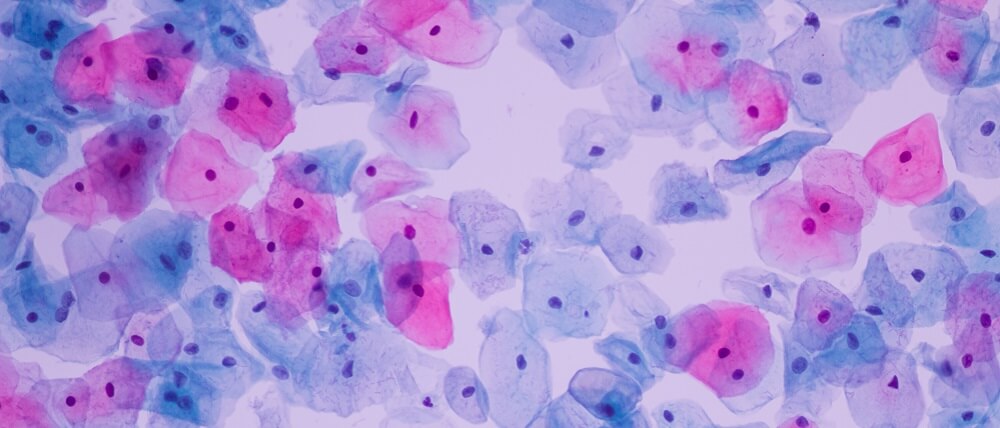Definition
The squamous cell or squamous epithelial cell is found in the epithelium of the skin, gastrointestinal tract, and cornea, and in the endothelium of various organs and soft tissues. A squamous cell relates more to its shape than a specific function as it is one form of an epithelial cell. Epithelial cells can also be columnar or cuboidal. Squamous means scale-like, meaning these are flat cells. Thick stratified squamous epithelium, composed of two or more single-cell layers, can be keratinized or nonkeratinized. The single layer of simple squamous epithelium lines several organs and body cavities.
What is a Squamous Cell?
A squamous cell is one of three forms of epithelial cell found in epithelial and endothelial tissues: squamous, cuboidal, and columnar. All epithelial cells fit tightly next to one another as their primary role is to protect underlying tissues from the external environment. As fluids cannot pass through the gaps between cells thanks to tight junctions, all molecules are forced to travel through epithelial cell membranes.

Squamous cells are thin and flat, just like the scales after which they are named. They provide a smooth surface that avoids blood turbulence in the blood vessels and also allows fluids to easily flow over them.
The surface of a squamous cell closest to the external environment is its apical surface. The lower side of the cell sits on the cell layer underneath or on a basal membrane – this is its basal surface.
Simple Squamous Epithelium
Found in the capillary walls, body cavity linings, and lung alveoli, the simple squamous epithelium is only one cell thick. This means that gases, nutrients, and waste products can rapidly enter or exit underlying tissues via passive diffusion. Some simple squamous epithelium is specialized according to where it is found. The endothelium of the capillary, for example, is composed of a single squamous cell layer and these cells produce special proteins that assist with new capillary growth (angiogenesis).
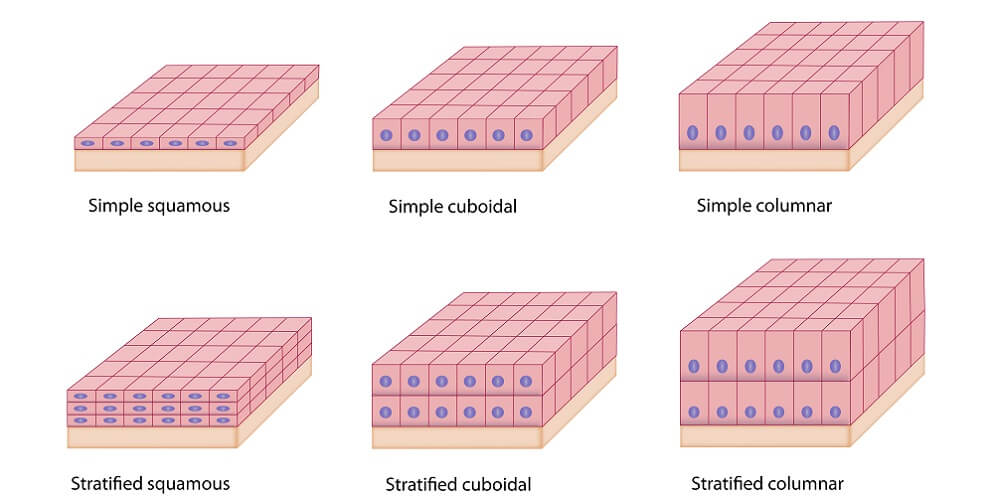
The entire circulatory system is lined by endothelium, including the heart and lymphatic system. The squamous cell is the primary cell of this single layer. In addition, the peritoneal, pleural, and pericardial cavities are lined with a mesothelium that is also composed of simple squamous epithelium.
Stratified Squamous Epithelium
Multiple squamous cell layers in a single tissue type form the areas closest to the external environment. The basal layer of stratified epithelium is most commonly composed of oblong or square cells (columnar or cuboidal respectively). As these cells are pushed upward, they flatten and lose organelles to become squamous cells.
A stratified layer means multiple cell layers. Most stratified epithelium, especially in the skin and digestive tract, renews itself through cell division in the lower levels. As more cells are produced, older cells are pushed upward. Basilar cells divide frequently. Squamous cells of stratified squamous tissue do not usually divide but are replaced over time. They are pushed to the surface and eventually discarded.
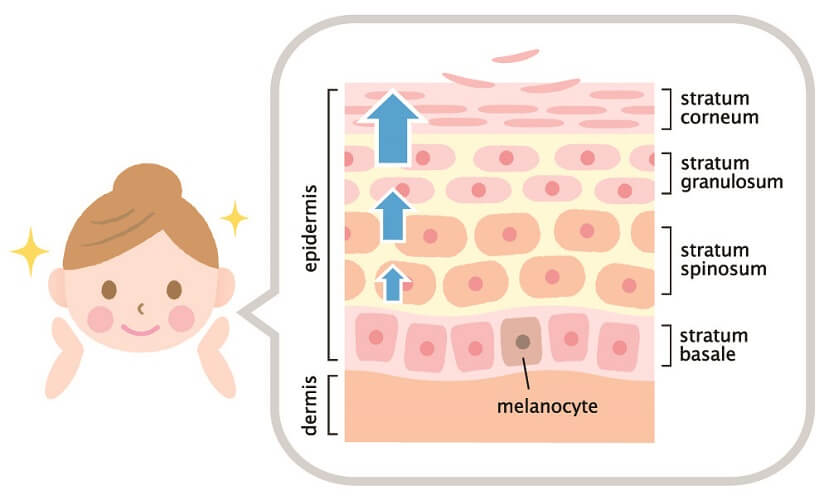
Transitional Epithelium
Transitional epithelium explains how a squamous cell is rather a shape than a cell type. In the urothelium that lines the urinary tract, muscles widen or narrow the lumens within the kidney, urethra, and bladder. When these muscles relax the urothelium expands, stretching square cuboidal cells into flatter squamous cells.

Squamous Cell of the Skin
A squamous cell of the skin is a flattened, non-functioning keratinocyte. It begins as a dividing basal cell and, over time, eventually flakes off the skin surface as a dead squamous cell or ‘squame’. The epidermis of the top layer of the skin is divided into five layers:
- Basal lamina: the supporting membrane that sits between the epidermis and the dermis.
- Stratum basale: basal cell layer of dividing keratinocytes and unipolar stem cells.
- Stratum spinosum: prickle cell layer of a different form of keratinocyte (spinous cell) that produces keratin proteins. This is an eight to ten cell layer; cells adhere to each other by way of desmosomes – spiny processes that interlock.
- Stratum granulosum: granule cell layer three to five cells thick in which these cells are beginning to flatten but are not yet squamous cells. At this stage, the nucleus begins to die off as do most of the organelles. Packed with keratin and quite hard, granule cells’ function is to protect. The non-keratinized stratified squamous epithelium has significantly fewer keratin deposits and is mainly found in mucus glands. Here, the nucleus and organelles continue to function.
- Stratum lucidum: only found in the palms of the hand and the soles of the feet and help to lower friction.
- Stratum corneum: keratinized squames are squamous cells. They eventually flake off.
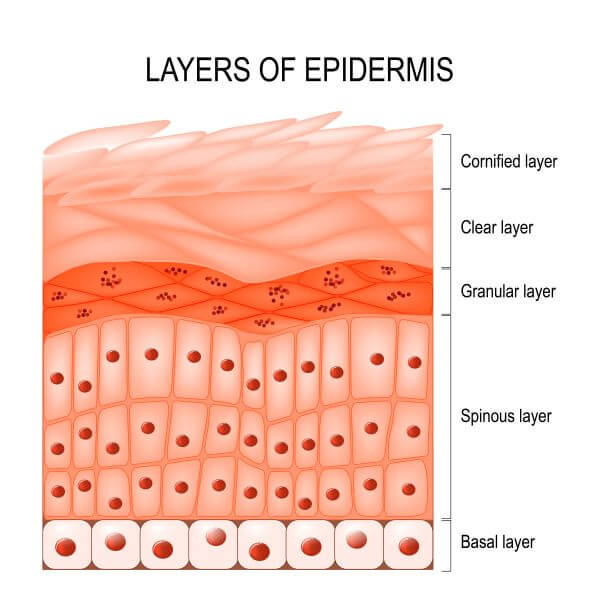
Where the cells of the epidermis are wider than they are high is where squamous cells begin.
Squamous Cell Cancer
Squamous cell carcinoma, also known as squamous cell cancer (SCC), is commonly found in the epidermis but also presents in the epithelium and endothelium of other tissues. As a true squamous cell of the skin does not have a nucleus, DNA mutations begin at an earlier stage – at the stratum spinosum or stratum granulosum. When cell changes occur lower down, any unnatural changes in cell growth are referred to as basal cell carcinoma (BCC). Cancer now seems to describe a full range of symptoms but in its purest form is the unchecked multiplication of abnormal cells that often, although not always, produce a tumor.
Squamous cell carcinoma pictures usually show epidermal examples as in the image below; skin cancer is the most common type of SCC.
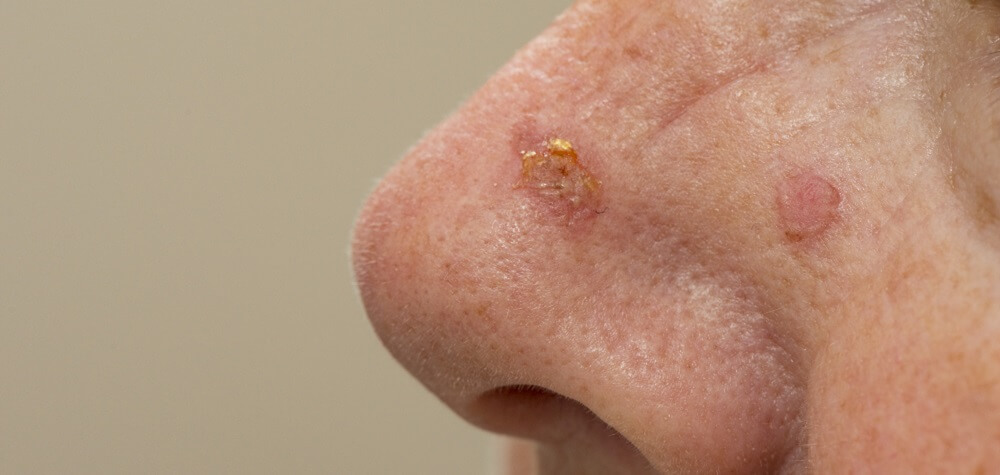
Squamous Cell Carcinoma Types
As this cell type is found throughout the body, squamous cell carcinoma types are broad. They are also not restricted to the human body. Dog squamous cell carcinoma is frequently found in our pets, particularly in large, dark-haired breeds. Mammals, fish, amphibians, reptiles, and birds are all capable of developing SCC.
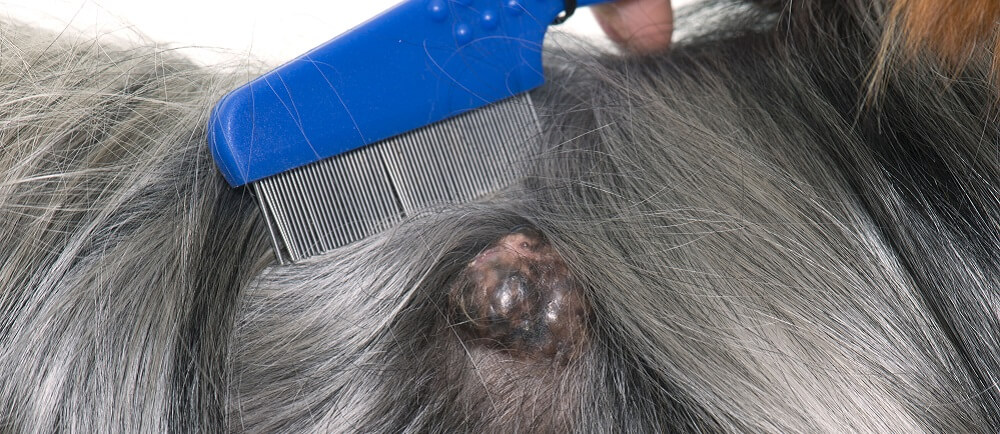
Human squamous cell carcinoma types are most commonly found in the skin, head and neck region, lungs, genitals, and urinary tract. A malignant SCC may begin life as a benign squamous cell papilloma (SCP).
Cutaneous squamous cell cancer (cSCC) is the second most common skin cancer but is curable when diagnosed at an early stage. Penetration of ultraviolet radiation and pollution are the main causes of skin cancer. A cSSC is often first diagnosed when the person notices a red, scaly patch of skin, open sore, raised growth with a central depression, or intermittent itching on sun-exposed areas. Facial cSSCs on the tops of the ears, lips, nose, arms, and legs are quite common – it is estimated that just under two million cases of cSCC are diagnosed in the United States every year.
Thanks to national drives, cases in Australia are currently plateauing. As accumulated DNA damage from UV rays is the major cause, diagnoses tend to be associated with older Caucasians who spend a lot of time outdoors, even in cooler climates. Men are also more at risk for squamous cell skin cancer. This may be because they are less likely to apply moisturizers containing low to mid-levels of UV protection.

Head and neck squamous cell carcinoma (HNSCC) begins in oral, pharyngeal, sinus, laryngeal, or esophageal tissues. Due to the proximity of important lymph and blood vessels in this region, HNSCC often metastasizes (spreads) to other tissues. This type of cancer is most common in men over fifty years of age and is linked to tobacco use, human papillomavirus infection, and high alcohol consumption.
Squamous cell lung carcinoma or epidermoid carcinoma is a non-small cell carcinoma that easily metastasizes to the lymph nodes, liver, bones, and brain. Squamous cell carcinoma of the lung accounts for 30% of all non-small cell lung cancer cases and is usually the result of tobacco use, secondhand smoke, radon gas or asbestos exposure, and living in high-pollution areas. Cases commonly begin in central regions of the lung and can produce relatively early symptoms such as a persistent cough, coughing up small amounts of blood, fatigue, wheezing, and shortness of breath.

Genital SCCs are often linked to human papillomavirus (HPV) infection. Nearly all cervical and vaginal cancers are squamous cell carcinomas linked to earlier HPV infection. National HPV vaccination drives for young girls have been extremely effective in reducing cervical cancer rates. A large Swedish study reported that girls vaccinated before the age of seventeen show a 90% reduction in cervical cancer incidence. Penile carcinoma is also associated with HPV infection, as well as living in areas of low hygiene where circumcision of male children is not performed.
The presence of the squamous cell in the urine does not mean SCC. As the squamous layer is constantly regenerating, it is normal to find low numbers in excreted fluids. Contamination of a sample from genital tissues may increase numbers. Alternatively, urinary tract infections damage the epithelial layer and higher numbers of squamous cells are shed. Squamous cell cancer of the kidney or ureter is extremely rare. Squamous cell carcinoma of the urinary bladder, on the other hand, is responsible for up to 5% of bladder tumors and primarily caused by persistent bladder infections, especially those caused by parasitic flatworms (schistosomes).

A rare type of SCC is angiosarcoma. This affects the endothelial cells of the blood and lymph vessels. As the endothelium of a capillary is composed of squamous cells, this is a type of SCC. Any organ or tissue with squamous cells can develop squamous cell cancer.
Squamous Cell Carcinoma Treatment and Prognosis
Squamous cell cancer treatment depends on the stage at which the cancer is diagnosed and the affected area. Nearly all cases require surgical excision. If there is a chance the abnormal cells have spread, this is followed by immunotherapy, chemotherapy, or radiotherapy, or a combination of two or more therapies. In lung SCC, for example, small areas of the lung can be removed (wedge resection), an entire lobe (lobectomy), or one lung (pneumectomy).
Lifestyle changes such as stopping smoking and working and living in low-pollution areas lower the risk of lung cancer, HNSCC, and angiosarcoma. Applying sunscreen or wearing a sun hat can prevent skin cancer. HPV vaccination before the age of seventeen significantly lowers genital SCC in females; good hygiene and protected sex lower the risk of this cancer form in males.

Squamous cell cancer prognosis similarly depends on when the cancer is diagnosed and where it is found. Any cancer that spreads is harder to treat.
For example, there are five stages of skin squamous cell carcinoma:
- 0: Carcinoma in situ – abnormal cells in the epidermis. Estimated 98% of treated cases are cured.
- 1: Carcinoma in epidermis and dermis less than two centimeters across without high-risk features. Estimated 96% of treated cases are cured.
- 2: Carcinoma in epidermis and dermis greater than two centimeters across with two or more high-risk features. Estimated 96% of treated cases are cured.
- 3: Metastasis into one small, localized lymph node or local muscle or bone tissue. Estimated 63% of treated cases are cured.
- 4: Metastasis into one larger localized lymph node or multiple lymph nodes and/or distant tissues. Estimated 30% survival rate.
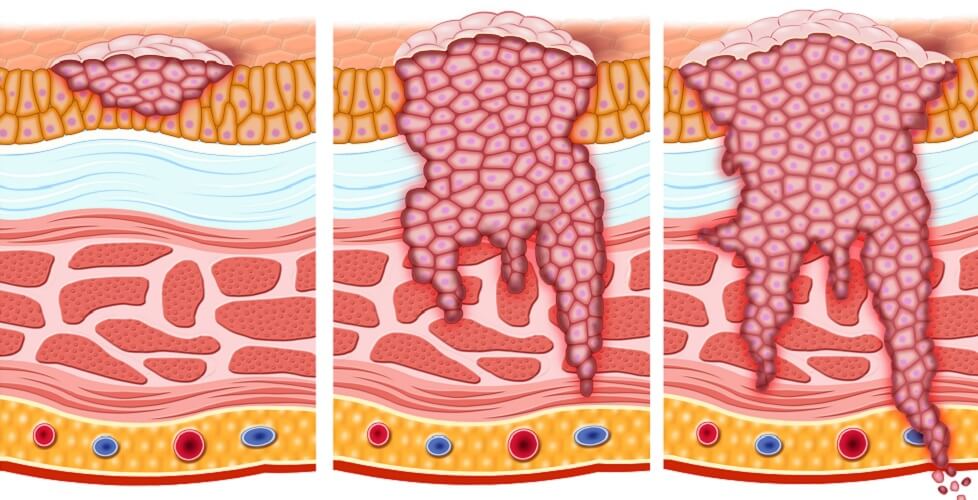
As with all cancer types, preventive measures and early diagnosis are key for the best cure and survival rates.

